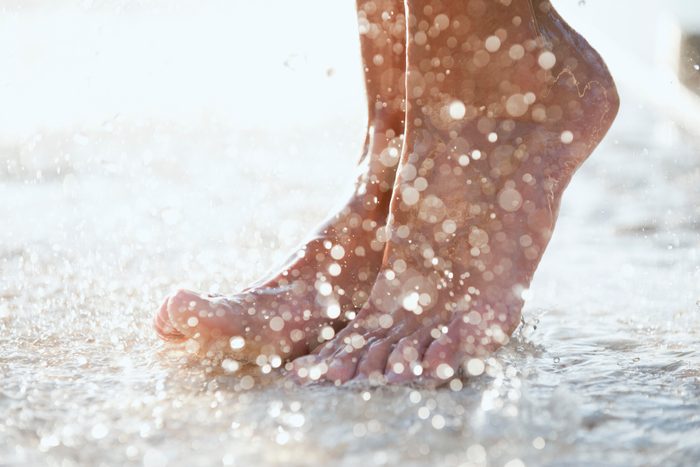New Study: Germs Flock to 3 Major Spots on the Body
Updated: Dec. 23, 2023

Microbial research from George Washington University identifies the regions where your skin microbiome could use a little extra scrub-a-dub-dub.
The human body is fascinating, and each of us has got those parts that draw our intrigue the most…but back in the days when a grownup called into the bathroom and told you to scrub real good, that advice might have been more scientifically grounded than you realized.
A recent study from George Washington University published in the peer-reviewed scientific journal Frontiers in Microbiology in September 2023 has shed light on the parts of the body that are common to neglect in the bath. The researchers’ findings validate the so-called “grandmother hypothesis.” (Bless Grandma for that healthy hygiene wisdom!)
The “Grandmother Hypothesis” put to the test
The “grandmother hypothesis” was coined and tested by researchers Marcos Pérez-Losada, MS, PhD, associate professor of biostatistics and bioinformatics, and Keith Crandall, MA, PhD, director of the Computational Biology Institute and professor of biostatistics and bioinformatics at George Washington University. In a press release, Dr. Crandall recalled how his grandmother always instructed the kids in his family to “scrub behind the ears, between the toes, and in the belly button.”
The hypothesis suggests that because these physiological nooks and crannies are easy to overlook, they might harbor different—potentially harmful—types of bacteria than easily accessible surface body parts. To explore this question, Drs. Pérez-Losada and Crandall designed a clever genomics course, enabling students to explore the microbial world residing on their skin by swabbing and analyzing DNA from various skin regions.
Research: Wash Your Hands Immediately After Touching These 10 Things
A student-led experiment into the skin’s microbiome
In a unique approach, 129 graduate and undergraduate students collected and analyzed their own specimens after swabbing the microbial communities in “moist and sebaceous” oilier hotspots: behind the ears, between the toes, and in the belly button. They also swabbed “control” areas—drier sections—like the calves and forearms.
The findings were intriguing: The forearms and calves showcased a greater microbial diversity, potentially indicating a healthier skin environment; while data drawn from the three moister areas suggested certain species of bacteria were more likely to overrun those regions.
The bacteria most prevalent in those moister regions are also said to be found in aquatic and damp “terrestrial” environments of the earth, functioning to break down dead organic material and in some cases playing roles in the fermentation process for some beverages. Peee-yew! This insight might explain the pungent smell you may sometimes experience from those regions.
Dr. Crandall notes, “When certain trouble-making microbes take over the microbiome, they can shift the balance away from health.” This imbalance can lead to skin conditions such as eczema or acne—or, simply those distinct odeurs that come from certain body parts.
For answers to common health curiosities delivered to you daily, get The Healthy @Reader’s Digest newsletter and follow The Healthy on Facebook and Instagram. Keep reading:
















